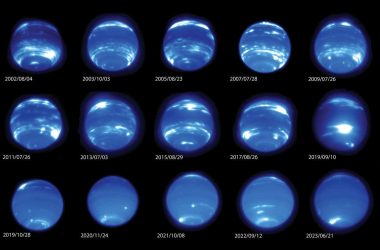ART and science merge to spectacular impact in these images, not too long ago launched by NASA. The pictures amp up anticipation for the upcoming Artemis II mission, which will likely be NASA’s first crewed area flight past low Earth orbit for the reason that Apollo missions of the Nineteen Sixties and Nineteen Seventies.
Final month, NASA employees started the hefty activity of portray NASA logos on two strong rocket boosters that may present important thrust for the Artemis II mission. Every iconic NASA “worm” is greater than 2 metres excessive and seven metres from finish to finish. The picture above reveals the crew engaged on the emblem at NASA’s Kennedy Area Heart in Florida. The brand had been retired, however was introduced again in 2020 for choose merchandise.
Artemis II, scheduled for 2025, will contain a four-person crew travelling past low Earth orbit (2000 kilometres from the floor or above) and passing across the moon. It would check whether or not life-support methods are as much as the job of extra distant area journey.
“Below Artemis, we’re going to the moon for scientific discovery and exploration and with our long-term targets in thoughts. We’ll develop the applied sciences and expertise we have to put together for a future human Mars mission,” says Matt Ramsey, mission supervisor for Artemis II.
The picture above, additionally at Kennedy Area Heart, reveals the most recent makeover of the Orion crew capsule of Artemis II – full with newly added logos. Each Orion and the boosters are pivotal parts for deep area exploration and, crucially, for Artemis’s long-term ambitions for a lunar area station.
Subjects:
- area flight/
- area exploration












